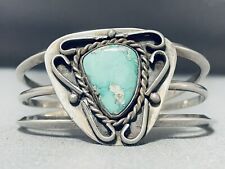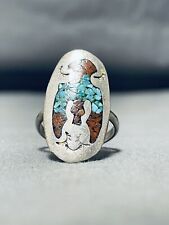When you click on links to various merchants on this site and make a purchase, this can result in this site earning a commission. Affiliate programs and affiliations include, but are not limited to, the eBay Partner Network.
Authentic Older AMTRAK RAILROAD CONDUCTOR UNIFORM HAT ~ GOLD PATINA BADGE & BAND
THIS MONTH, WE ARE OFFERING MORE EXAMPLES OF FINE ANTIQUE RAILROAD ARTIFACTS FROM THE ESTATE OF SEVERAL ADVANCED COLLECTORS, INCLUDING MEMORABILIA FROM A NUMBER OF RAILROADS
PLEASE CHECK OUR OTHER items FOR MORE RAILROAD ARTIFACTS
Many people are fascinated by railroads. At one time, railroads were connected to most aspects of community and economic life, and almost everyone had the experience of taking a passenger train to some distant destination. Today, railroads are still a vital part of the nation\'s commerce, but they have largely evolved into less publicly visible movers of freight. For the most part, the romance and glory of the great age of the railway has passed from the scene, but the memories and history remain.
One way of remembering this bygone era is through collecting artifacts that have survived the years. Most RR lines were, and still are large enterprises requiring vast amounts of material and equipment to operate. While much of this material and equipment like locomotives, cars, buildings, etc. are \"collectible\" for only a small number of people and organizations with the resources to maintain them, smaller items like lanterns, lamps, dining car china and silver, paper, badges, locks and keys are well within the reach of individual collectors. Therefore, many people seek out such items ~ often called \"railroadiana\" -- at sales, garage sales, antique shows and collector events.
COLLECTING RAILROAD EPHEMERA & MEMORABILIA
An immense amount of paper of various kinds was used by the railroads. Some examples: public timetables to inform passengers about train schedules, maps to advertise routes and attract freight business, employee timetables to inform crews about rules and operations, brochures to entice the public to tourist destinations served by a particular line, passes to allow guests and dignitaries free travel on trains, and many other types of paper. For paper items that were produced for the public, railroad companies gave a lot of attention to attractiveness and design. Some companies went so far as to commission artists to paint special artwork that was then reproduced on timetables, brochures, calendars, and other items. Even though some of this paper was produced in relatively large quantities, the fragile nature of paper combined with the tendency of most people to throw it away after use has resulted in some of it being rather rare.
Today, many collectors seek out this paper, some specializing in particular types such as timetables or passes. They appreciate it as an means of understanding how railroads operated many years ago, as a window on travel before the age of commercial aircraft, or as artistic examples of early public relations. In fact, railroad paper seems to have recently \"come of age\" as a collectible, and rare examples have begun to command impressive prices at sale. Still, more common examples of railroad paper remain one of the least expensive types of railroadiana, and many collectors have gotten their start in the hobby with NOTE > THE PRIOR OWNER STRIVED TO DISPLAY VARIOUS HAT BADGES COLLECTED ON ACTUAL HATS OF THE TYPE WORN BY RAILROAD CONDUCTORS ~ BE AWARE > SOME OF THE BADGES AND HATS MAY HAVE BEEN \"MATED\" AT SOME POINT, AND THE HATS MAY DIFFER IN MANNER FROM THOSE ACTUALLY USED BY THE SPECIFIC RAILROAD NAMED TO THE BADGE, THUS THE BADGE MAY NOT \"MATCH\" THE HAT, DESPITE THE RATHER APPROPRIATE AESTHETIC MANNER OF THE DISPLAY. IT SHOULD BE NOTED, VARIOUS RAILROAD USED HATS BY DIFFERENT MANUFACTURERS AND SUPPLIERS, LIKELY CHANGING OVER THE YEARS, AND PERHAPS EVEN STYLES CHANGED, A NECESSITY DUE TO HATS WEARING OUT WELL BEFORE REPLACEMENT OF BADGES.
BADGES OF MANY STYLES AND TYPES WERE USED BY RAILROADS, TO DESIGNATE AUTHORITY AND INDICATE THE JOB OR DUTY OF AN EMPLOYEE. EMPLOYEES NEEDED SOME WAY OF INDICATING THEIR AUTHORITY, AND BADGES WERE A MAJOR MEANS OF DOING THIS. AMONG THE JOB CATEGORIES DESIGNATED BY BADGES WERE: ENGINEER, PORTER, CONDUCTOR, TRAINMAN, BAGGAGE MAN, GATEMAN, STATION AGENT, POLICE SPECIAL AGENT, DETECTIVE, TICKET AGENT, INFORMATION CLERK, TIME CLERK, AND MANY MORE.
FROM AN ADVANCED ESTATE COLLECTION OF RAILROAD MEMORABILIA, THIS OUTSTANDING UNIFORM HAT IS OF A STYLE AND TYPE NO LONGER UTILIZED BY AMTRAK.
A SUMMER HAT, FEATURING A MESH MATERIAL FLARED TOP OVER A WOVEN FABRIC RISER, FEATURING A STITCHED BLACK LEATHER BRIM. NO LABEL TO INDICATE MANUFACTURER OR SIZE, HOWEVER A MADE IN THE U.S.A UNION LABEL IS FOUND BENEATH THE BROWN, PIERCED LEATHER HAT BAND.
MOUNTED TO THE FRONT, A GOLD PATINA HAT BADGE IS AFFIXED, EXHIBITING THE OLDER AMTRAK \"ARROW\" LOGO, FEATURING RED AND BLUE ENAMEL INLAY OR A PEBBLE GRAIN BACKGROUND, WITH A SMOOTH FINISH \"ROCKER\" TO THE LOWER EDGE, READING ~ CONDUCTOR.
GOLD PATINA METAL DOMED BUTTONS ARE AFFIXED AT EITHER SIDE EXHIBTING THE AMTRAK ARROW LOGO IN BAS-RELIEF. THE BUTTONS RETAIN A FLEXBILE GOLD PATINA METAL HAT BAND ACROSS THE TOP OF THE BRIM.
IN ADDITION, A SMALL SILVER GREY PATINA LAPEL PIN IS AFFIXED TO ONE SIDE OF THE HAT RISER, READING AMTRAK, ABOVE THE \"POINTLESS ARROW\" MODERNISTIC LOGO.
A WELL PRESERVED EXAMPLE ~ APPEARS TO EXHIBIT RELATIVELY LITTLE WEAR, IF ANY ~ PERHAPS TYPICAL RELATIVE TO AGE AND HANDLING ~ OVERALL, FINE VINTAGE CONDITON, BEST CONFIRMED BY EXAMINING THE IMAGES OFFERED.
HISTORY OF AMTRAK
The National Railroad Passenger Corporation, known as Amtrak, officially began service on May 1, 1971 when Clocker no. 235 departed New York City\'s Penn Station at 12:05 a.m. bound for Philadelphia on Penn Central\'s electrified Northeast Corridor. Formed by Congress to relieve the railroads of the financial burden of providing unprofitable passenger service, Amtrak took over the operations of all but three railroads who continued their own intercity passenger train service for a period of time. They were the Rock Island Railroad, the Southern Railway, and the Denver & Rio Grande Western Railroad. The Reading Company also opted out for its runs from Philadelphia to Jersey City and Reading, as they were considered more commuter than intercity, and maintained these trains until the 1980\'s. In the early years of operation, Amtrak\'s equipment was made up of cars and engines from the railroads that signed on. Due to the dire financial straits of eastern railroads, maintenance on these cars and engines was minimal prior to acquisition by Amtrak, and most of the fleet of so called Heritage cars came from the western roads like Union Pacific, Southern Pacific and Burlington Northern. A notable exception was the fleet of stainless steel cars built for the Pennsylvania Railroad by the Budd Company at their Northeast Philadelphia Red Lion Plant. On the NEC, the PRR MP54\'s (aka the red cars) and Silverliners from Budd and GE held down commuter service, and motive power for locomotive hauled cars was provided by the venerable Pennsylvania GG1\'s, now under their third owner and in their fourth decade of service, An early Amtrak standout were the relatively new Metroliner multiple unit (or MU) cars, first conceived by the PRR and the Department of Transportation, built by the Budd Company and put into revenue service by the PC. One ofthe first orders of business for Amtrak was to purchase new cars, and they turned to the Budd Company again, ordering the first of hundreds of Amfleet cars, basically unpowered coaches and dining cars based on the Metroliner design. Amtrak currently operates over more than 22,000 route miles, mostly on the tracks of freight carriers. It owns 730 route miles, about 3% of the total nationwide, primarily the Northeast Corridor between Boston and Washington, DC, and in Michigan. These were acquired on April 1, 1976 as part of the creation of Conrail from the bankrupt Penn Central and other railroads in the Northeast. The Northeast Corridor, of which the New York to Washington DC portion was originally electrified by the Pennsylvania Railroad in the 1930\'s, is Amtrak\'s busiest route. On weekdays, Amtrak operates up to 265 trains per day, excluding commuter trains, and over 100 of these trains travel through Philadelphia. As the second busiest station in the system, Philadelphia\'s 30th Street Station saw over 3.7 million travelers in 2001. 30th Street is also the changeover point for long distance trains. Trains from New York City have their electric locomotives replaced by diesel engines in preparation for travel off the NEC to points in the south and west. Other Amtrak served stations in the area are North Philadelphia, Cornwells Heights and Paoli. In 2002, Amtrak\'s roster of equipment includes 2,188 railroad cars including 173 sleeper cars, 743 coach cars, 66 first class/business class cars, 65 dormitory/crew cars, 65 lounge/caf/dinette cars, and 83 dining cars. Baggage and Mail and Express cars make up the remainder of the fleet. Amtrak operates 436 locomotives, 360 diesel and 76 electric. Introduced in 2001, twenty Acela Express trainsets will provide high-speed rail service along the Northeast Corridor between Washington and Boston. Two of the three heavy maintenance facilities that Amtrak owns are in the area, the locomotive maintenance shops in Wilmington, DE and the car maintenance shops in Bear, DE, with maintenance also performed at Race Street Yard and Penn Coach Yard adjacent to 30th Street Station in USE THE \"CONTACT SELLER\" FUNCTION TO CONTACT US AND RESOLVE ANY QUESTIONS BEFORE offerDING INTERNATIONAL SHIPPING AVAILABLE FOR SOME ITEMS VIA USPS PRIORITY MAIL INTERNATIONAL ~ NO FIRST CLASS INTERNATIONAL PARCEL ~ CONTACT US FOR A SHIPPING RATE QUOTE BEFORE offerDING







